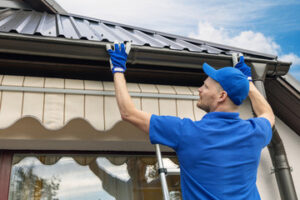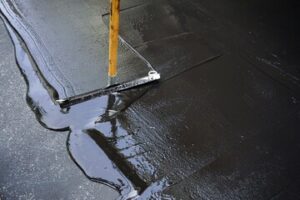After lockdowns and social distancing restrictions have passed, people have rediscovered their love for parties. This means that party rental businesses have a lot of potential for growth.

Creating a business plan is an important step in setting up your business. This can help you structure your ideas and create a clear roadmap for your Party Rentals business.
Tables and chairs are essential to any event, providing guests with a place to sit and enjoy food, drinks, and decorations. They come in a variety of shapes, sizes, and materials to suit different event types and aesthetics. Many rental companies also offer a wide range of additional services and design options to enhance the overall experience for their customers.
Chair and table rentals are a great source of revenue for rental companies, as they are frequently used for events like parties, weddings, and corporate meetings. Several factors influence the price of these items, including the material they are made from, the style, and the quantity needed. In addition, supplemental services like audio-visual equipment may be necessary for certain events, which can also affect costs.
The type of furniture a customer chooses can also make a difference in the cost, with higher-quality models often commanding a premium. For example, plastic folding chairs might be available for around $1 each, while a more elegant choice like Chiavari chairs could cost $3 each or more. Additional features like padded seats and extra arm rests can also add to the price. The number of chairs and tables a customer needs can also impact pricing, with bulk discounts often offering significant savings.
For casual events like birthday parties and school carnivals, rentals that are durable and stackable are typically preferred. These types of tables can be paired with standard plastic folding chairs for a simple yet functional setup. For more formal occasions, such as weddings and dinner parties, Chiavari chairs provide a more elegant option that can be matched with a variety of tablecloth styles to match the event’s overall look and feel.
In addition to determining the size, style, and material of tables and chairs, customers should also consider the specific delivery and setup requirements. Some rentals may include this service as part of the overall package, while others may charge an additional fee that varies depending on the location and difficulty of access to the event site. Customers should ensure they understand any applicable fees before booking their tables and chairs to avoid any surprises during the checkout process.
Lighting & Decor
Adding the right lighting to your event is essential for setting a mood and creating visual appeal. There are a variety of lights available for rent from NYC party light rentals companies that can help you create an unforgettable experience. With options ranging from basic LED string lights to gobos and spotlights, you can find the perfect lighting for your next event.
Chandeliers are an elegant and visually appealing way to add a touch of glamour to any space. They can be hung from ceilings, walls, or pipe and drape, and they come in a wide range of styles to match any theme. These rentals are a great way to add more elegance to a dinner or formal event, and they can also be used as centerpieces for tables.
Uplighting is another great way to spruce up your venue, and it can be especially effective in large spaces. They come in many different colors, and they can be used to create a specific mood or highlight certain areas of the room. Uplighting also has one of the best cost-to-impact ratios of any decor rental, so it can be a real money saver when looking at your overall budget.
Another option is a LED dance floor, which can be set up in a short amount of time and easily rented from many party rentals companies. These are a great way to add some excitement to any event, and they can be rented with or without an attendant to make the process easier for you.
The last thing you want at your event is for it to be boring and lifeless. With the right lighting, your guests will have a much better time and you’ll be able to turn a normal gathering into an extraordinary experience that they will never forget.
Based in Brooklyn, New York, Abbott’s Party Rental offers everything you need for a successful event. They have been serving clients across the New York City metropolitan area for more than 12 years, and their inventory includes bar supplies, glassware, linens, furniture, table settings, decor items, kitchen equipment, staging, and more. Previous customers have praised the company for its organized customer service and reasonable rates.
Tents & Covers
If you’re hosting an outdoor event, having a tent rental for your party will keep your guests comfortable. This will prevent them from being exposed to the elements or pests, and it will also allow them to mingle in a private space away from curious neighbors or passersby.
There are many options available for tent and canopy rentals, including those that are designed to hold up in various weather conditions. Whether you’re hoping for a quick spot of shade from the sun, protection from a brief rain shower, or a place to keep food covered, your local party rental store will have options that will suit your needs.
Most party rental specialists carry frame tents that are simple and sturdy. They can be staked or weighed down with cement blocks, and they have an open interior so that you can add things like dance floor rentals. These canopies are perfect for small parties and events in backyards and parks.
For larger parties, clear span tents are a great option. These have no center poles, leaving plenty of room for people and other items like a stage, a dance floor, or game or entertainment area. These tents can also be paired with flooring systems that will allow you to create unique and customizable party spaces.
These types of tents can be adorned with lighting, furniture and other decorations to match the theme of your event. You can also ask your local party rental store about adding fans to help keep the air moving, portable heaters for fall and winter parties, or even curtains that can be hung inside to make the space feel more intimate.
If you’re ready to start your own party rental business, the first step is to get a quality tent, some tables and chairs, a couple of crates for storage, and some cleaning supplies. Then, promote your services by word of mouth and creating a google business listing and website. Finally, once you have enough jobs to cover your expenses, it’s time to get insurance and incorporate your company.
Catering Equipment
A catering business requires a variety of equipment to keep up with the demands of various events. For example, insulated beverage dispensers and chafing dishes help transport hot and cold drinks from the kitchen to the event venue without losing their temperature. Coffee urns are also useful at serving stations for catered events. Likewise, portable refrigeration units or coolers allow food to stay at a safe storage temperature and prevent spoilage while being transported from the kitchen to the event location.
Other catering equipment helps with the transportation and organization of utensils, dinnerware, and other supplies for catered events. This includes flatware organizers and bus tubes to hold and carry utensils, as well as mobile carts that streamline the movement of oversized items. Catering businesses may also use hand trucks, utility dollies, and platform trucks to move equipment between venues and locations.
Catering equipment can be purchased new or used. Purchasing used equipment can be budget-friendly for startup catering companies or smaller establishments, but it may come with added wear and tear that affects performance. New equipment can cost more but offers peace of mind that it is high-quality and designed to last.
Some catering companies offer a range of equipment packages for different event types, such as weddings or special themed events. These may include essentials such as tables and chairs, plus extras like chafing dishes or serving trays. Others provide complete setup and pickup for large items, such as tents and stages.








